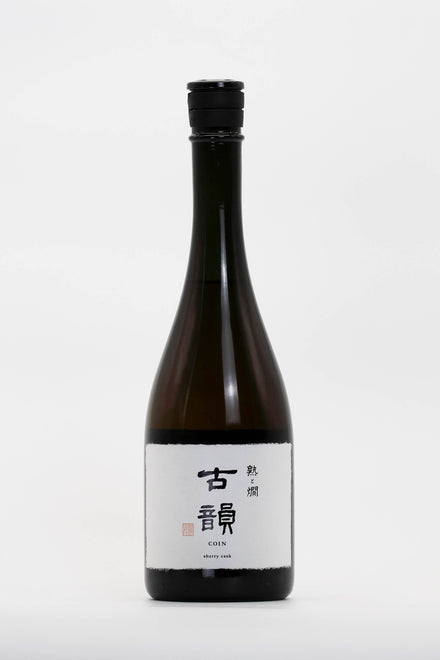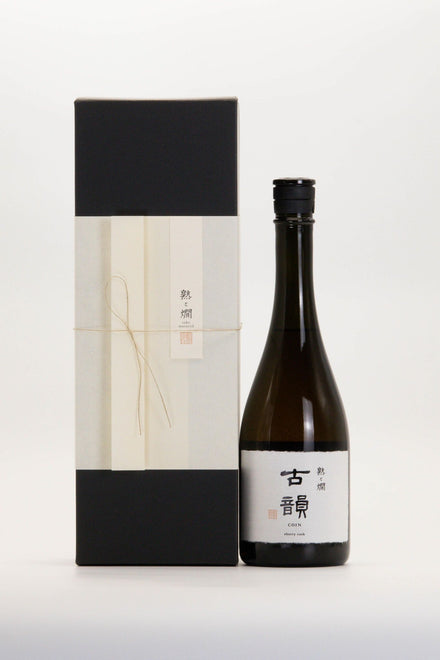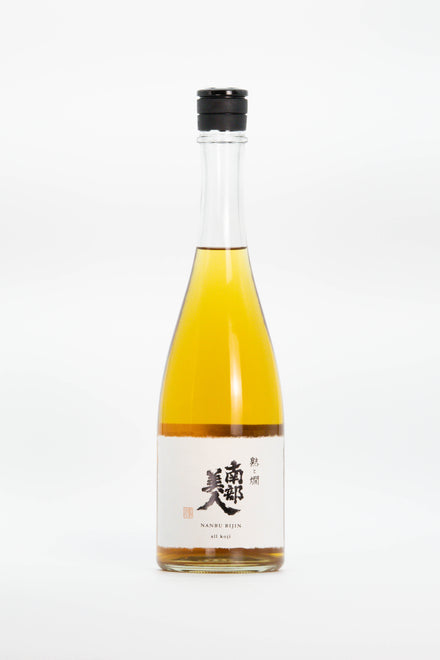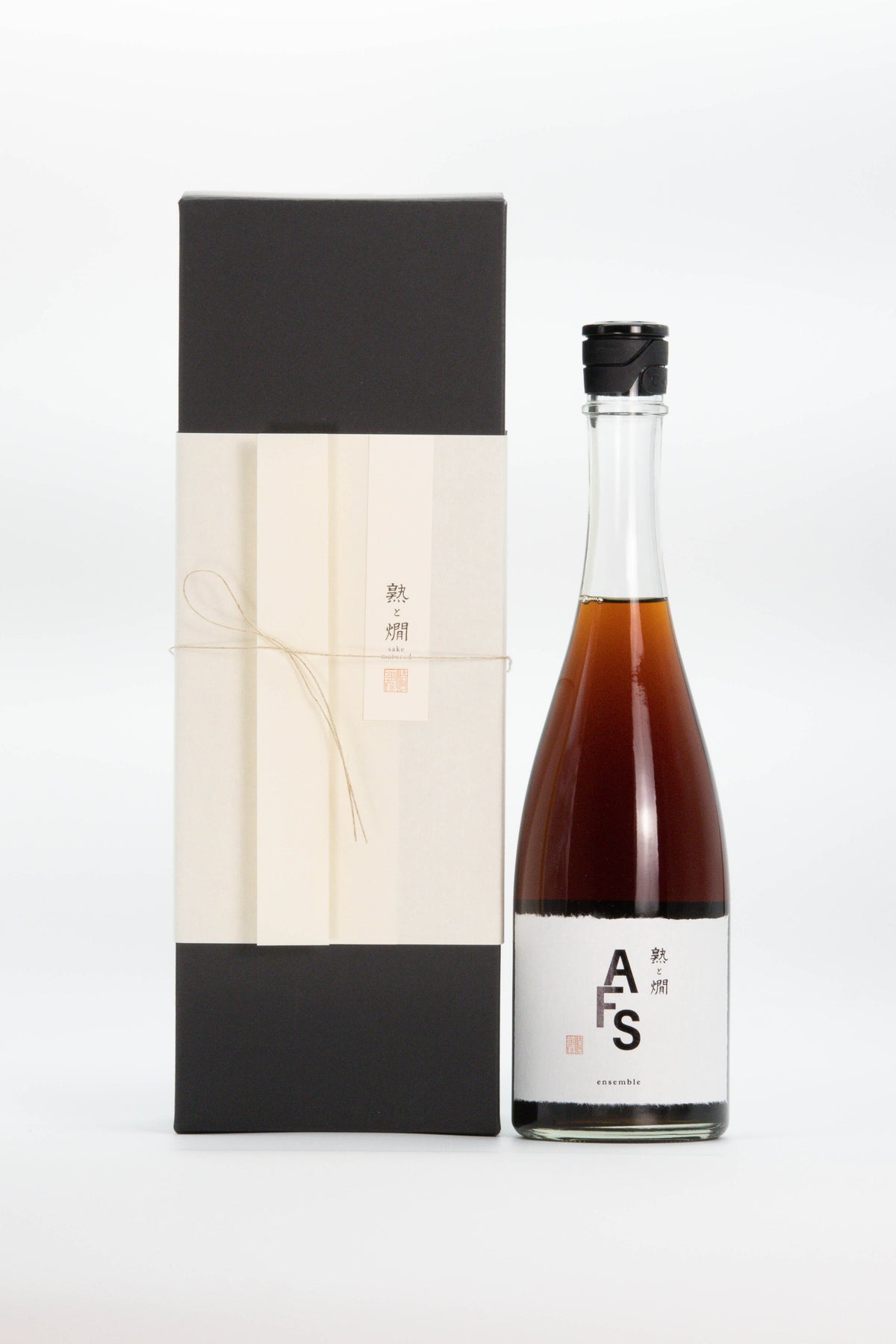
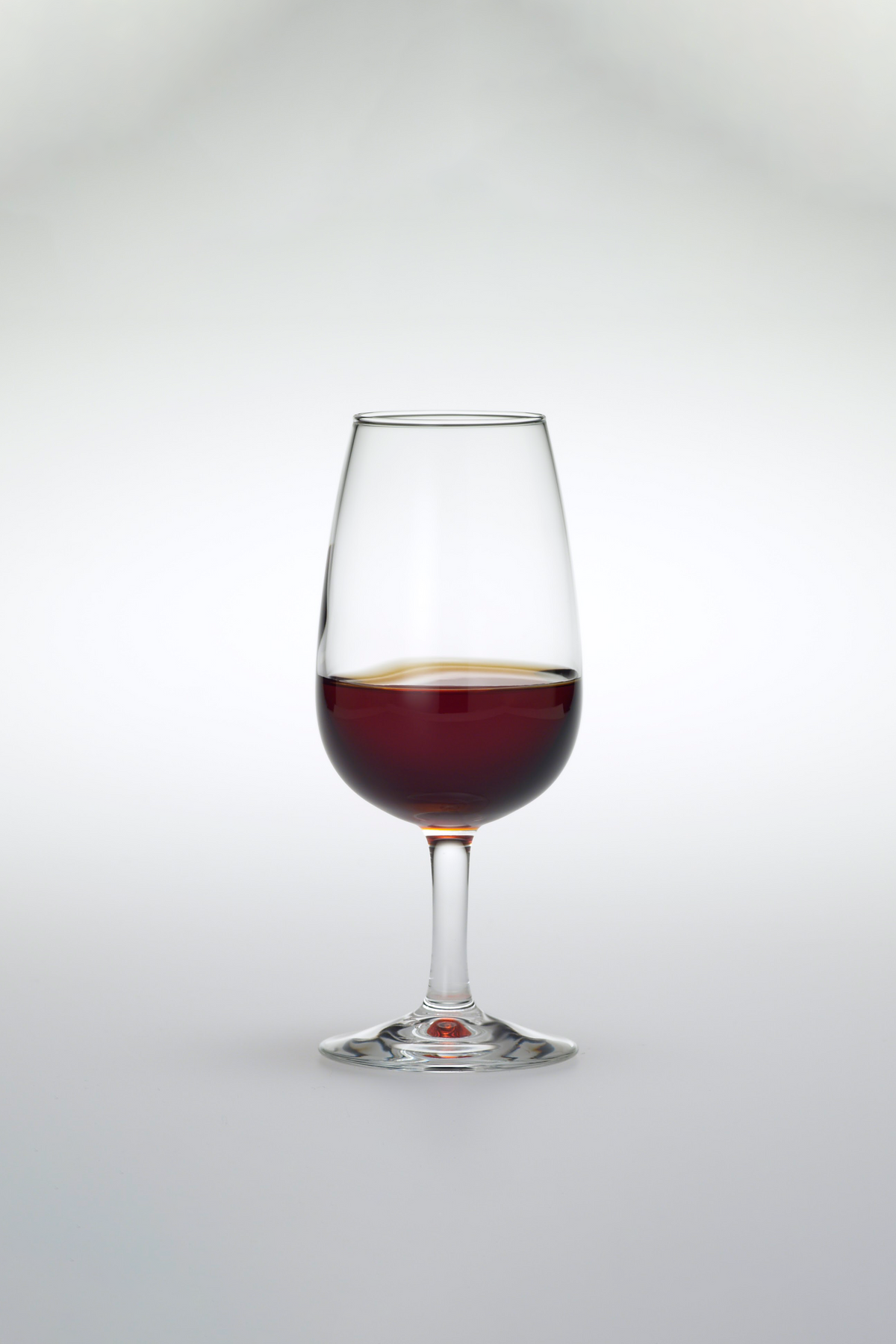
Brewed using a high-temperature method like no other, it has a deep acidity and a mellowness that supports it. The scent is gorgeous, and you can enjoy the unique world view that only Kidoizumi can offer.
[gift] AFS Ensemble
| Vintage | - |
| Years aged | - |
- 10,000 – 49,999yen
- All Products
- Amber
- Gift suggestions
- NA (please search by vintage)
- Non-vintage
- Throughout the meal
- With dessert and/or as an after-dinner drink
- 熟と燗オリジナル
- Brewer:Kidoizumi Sake Brewery
- Alcohol:17%
- Volume:720ml
Couldn't load pickup availability
[ Drinking alcohol under the age of 20 is prohibited by law. ]
Kidoizumi Sake Brewery has developed a brewing method called Kouon Yamahai Ichidanjikomi (one-stage fermentation), designed to craft a one-of-a-kind sake with an emphasized acidity to withstand long-term maturation.
AFS Ensemble is an assemblage made by combining a Genshu from the 1970s with a small amount of younger sake to deliver both a mellow and gorgeous profile.
It pairs well with citrus fruits, especially oranges. From dishes like duck in orange sauce to orangette (orange peel chocolate) with a matching cacao, a myriad of beautiful marriages are possible.
- about
-
Type Assemblage Rice polishing ratio - Yeast type - Ingredients/raw materials Rice (domestic), rice koji (domestic), brewed alcohol Rice type - Origin of rice - Toji(Brew Master) - Assemblage Yes (Assemblage of unprocessed sake with a short aging period, mainly from the 1970s)
- Recommended occasions/temperature
-
- How to store
-
- Delivery dates and charges
-
![[gift] AFS Ensemble](http://sakematured.com/cdn/shop/files/AFSgift.jpg?v=1745319487&width=1445)
![[gift] AFS Ensemble](http://sakematured.com/cdn/shop/files/glass_5_2.png?v=1745319487&width=1445)
Tasting comments
-
Hidekazu Ishiwata
(Former National Tax Bureau Chief Appraiser)Caramel-colored, with a pleasant acidic impact on the palate, and a diverse range of aromas including cacao, raisins, nuts, lactic acid, and esters.
It has a smooth mouthfeel with an edgy acidity, and the graininess and resonant umami are wonderful. -
Akiko Toda
(Director of ITTEKI, Japan Sake and Meat Research Institute)Opens with a rich aroma full of depth.
Refreshing citrus acidity. Deep aroma of mandarin and bergamot. Dried fruit feel. Well-balanced and elegant. Comfortable, relaxing, and refreshing, it's a joy that such an aged sake exists. -
Yuji Yamauchi
(Yushima Tenjinshita Sushi Hatsu 4th generation / 1st JSA SAKE DIPLOMA competition winner)Toast, orange marmalade, brown sugar, and vanilla - reminiscent of port and sherry.
On first tasting, the overlapping acidity and rice aroma stand out, but are perfectly balanced and centered towards the end. With its colorful impression reminiscent of a vinegar-flavored chocolate parfait, it is a versatile sake that can be paired with and enhance both Japanese and Western dishes. -
Christopher Hughes
(WSET Sake Educator)Pronounced, smokey and creamy nose of yogurt and cream cheese. Bright, citrussy through the mid palate with tons of layers and depth and a pleasant note of chocolate orange. Super juicy with lots of umami. Long finish with coffee and dried fruits notes. Reminds me of a mature umeshu.
-
Nobuhiro Ueno
(Juku to Kan Bar Master / Permanent Director of the Toki Sake Association)Fragrant and delicious
A gentle sweetness reminiscent of bekko candy.
There is almost no irritation in the mouth, and it slides smoothly into the mouth.
The umami flavor blossoms as it slides down your throat.
The aftertaste of umami and fragrant aroma continues for a long time.
A truly high quality, matured ginjo sake that is both elegant and full of flavor.
Brewer


Kidoizumi Sake Brewery
For over 50 years, Kido Izumi has continued to use the method of making sake mash, which uses natural raw lactic acid bacteria to prepare the mash at high temperatures, allowing the three bacteria of koji mold, lactic acid bacteria, and yeast to ferment freely. .
We continue to pursue the potential of natural lactic acid and take on the challenge of creating delicious sake with health, safety, and individuality as our themes.
We are moving forward under the unwavering vision of Izumi Kido's brewery.
After a period of time since its founding in 1899, it was in 1955 that a major turning point came to define Kido Izumi as it is today. At the decision of the 3rd generation brewer, we changed the brewing method to the ``Tsatsuyama Haimoto'' method.
At that time, it was a period of high economic growth where mass production was essential. At a time when sanzoshu, which was increased in volume with a seasoning liquid, met the needs of the masses, he was one of the first to realize the dangers of salicylic acid, which was used as a preservative, and worked to create sake that could be stored for a long time without relying on preservatives. is. Based on the strong desire of the third-generation brewer to ``make sake that does not use any additives, pesticides, or chemical fertilizers,'' in 1961, we decided to create a sake brewery that does not use any pesticides or chemical fertilizers, not only of additives, but also of the rice that is the raw material. We also began producing naturally brewed sake (currently branded as Kido Izumi Shizenmai), which is made using 100% naturally farmed rice.
Another impetus for ``brewing sake that does not go bad even after long periods of storage'' is the challenge of making sake older, or in other words, making aged sake. Approximately 10 years have passed since the switch to high-temperature Yamahaimoto, and despite repeated failures, they succeeded in producing long-term aged sake in 1966. Sake can now also be aged as old sake.
In the Showa era, the quality and price of Japanese sake deteriorated after one year of production, so Izumi Kido's determination to research brewing methods with old sake brewing in mind, and his pride as a pioneer, led to the brewery's 5 The oldest sake is over 40 years old and is still aging.

